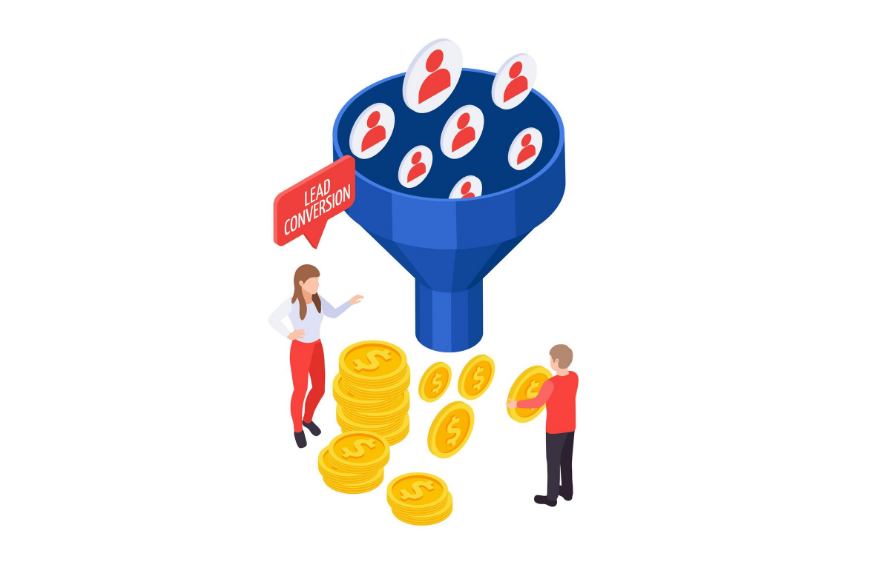Table of Contents
- Introduction to Intent-Based Marketing
- Understanding Buyer Intent
- The Importance of Targeting High-Intent B2B Buyers
- Identifying High-Intent B2B Buyers
- Crafting Intent-Based Marketing Strategies
- Leveraging Technology in Intent-Based Marketing
- Measuring Success in Intent-Based Marketing
- Challenges and Solutions in Intent-Based Marketing
- Conclusion and Future Trends
Introduction to Intent-Based Marketing
Intent-based marketing is an evolving strategy that focuses on understanding the intentions of potential buyers. Unlike traditional marketing strategies, which often rely on broad demographic targeting, intent-based marketing zeroes in on specific behaviors and signals that indicate a buyer’s readiness to make a purchase. This approach leverages data analytics to identify and target high-intent B2B buyers, offering a more refined perspective on customer needs and motivations.
The cornerstone of intent-based marketing lies in its ability to interpret user behaviors—such as online searches, content consumption patterns, and engagement with various marketing materials. By analyzing these behaviors, businesses can gain insights into the specific stages of the buyer’s journey. This understanding enables marketers to tailor their strategies, ensuring they connect with potential customers at the most opportune moments. Consequently, this form of marketing helps organizations allocate resources more efficiently and fosters higher conversion rates.
As the B2B landscape continues to evolve, the significance of understanding buyer intent becomes increasingly apparent. Given that B2B purchasing processes are often complex and lengthy, recognizing when a buyer is demonstrating high intent can dramatically influence the effectiveness of marketing campaigns. Utilizing intent data allows marketers to create targeted messaging that resonates with buyers, moving them further along the sales funnel.
In essence, intent-based marketing represents a paradigm shift in how organizations approach their marketing initiatives. By focusing on high-intent B2B buyers, businesses can develop more effective marketing strategies that not only meet the immediate needs of potential clients but also foster long-term relationships. This strategic alignment not only enhances customer satisfaction but also drives sustainable business growth. Understanding and implementing intent-based marketing is crucial for organizations seeking to remain competitive in an increasingly informed marketplace.
Understanding Buyer Intent
Buyer intent is a critical concept in the realm of marketing, particularly in the context of B2B transactions. It refers to the likelihood of a potential customer making a purchase, influenced by their specific needs and circumstances. Understanding buyer intent is essential for marketers, as it allows them to tailor their strategies effectively to meet the needs of high-intent buyers, facilitating a more targeted approach.
Buyer intent can be categorized into two main types: explicit and implicit intent. Explicit intent is when a buyer clearly articulates their desire to purchase a product or service. This is often showcased through direct actions such as filling out a contact form, requesting a quote, or engaging in conversations that indicate readiness to buy. Recognizing explicit intent enables marketers to immediately prioritize leads, ensuring they focus efforts on those who are most likely to convert.
In contrast, implicit intent is less straightforward and involves indirect signals that indicate a buyer’s interest. This can include behaviors such as browsing certain web pages, downloading resources like whitepapers or case studies, or engaging with content on social media. Implicit intent often requires more interpretation, as it necessitates an understanding of not just the actions taken by potential customers, but also the context in which these actions occur.
For marketers, assessing buyer intent involves monitoring various signals that may indicate how ready a buyer is to make a decision. Traffic sources, engagement levels, and content consumption patterns are all data points that can help gauge intent. By aligning marketing strategies with these insights, businesses can develop more effective approaches that resonate with the specific needs of high-intent B2B buyers.
The Importance of Targeting High-Intent B2B Buyers
In the B2B landscape, targeting high-intent buyers has emerged as a pivotal strategy for organizations aiming to refine their marketing efforts. High-intent B2B buyers are those who demonstrate a clear inclination towards making a purchase, often actively engaging with brand content, seeking product information, or comparing solutions. By focusing on this segment, businesses can experience markedly higher conversion rates, as these buyers are considerably further along in the purchasing journey.
One of the primary benefits of engaging high-intent prospects is the streamlined approach to marketing spend. When resources are allocated towards audiences that are more likely to convert, organizations experience not only an increase in conversions but also a more efficient use of budgetary allowances. Rather than casting a wide net in hopes of attracting potential leads, targeting high-intent buyers allows for more focused campaigns. This optimization leads to a higher return on investment (ROI), proving that a strategic approach can reduce waste in marketing efforts significantly.
Moreover, building connections with high-intent buyers often facilitates the establishment of long-term relationships. Once a business has successfully addressed the specific needs of these buyers, it can lead to greater customer loyalty, repeat purchases, and valuable referrals. Statistics underscore this reality; for instance, studies indicate that companies which invest in nurturing their relationships with high-intent leads observe a 50% increase in their likelihood of repeat business over those that do not.
Additionally, effective targeting can result in case studies showcasing successful business transformations. Such examples illustrate how focused campaigns towards high-intent B2B buyers not only enhance immediate sales but also contribute to long-standing partnerships that provide mutual benefits. Overall, the advantages of targeting this specific group cannot be overstated, as they embody the potential for enhanced performance and sustainable growth within the B2B sector.

Identifying High-Intent B2B Buyers
Identifying high-intent B2B buyers is crucial for any organization seeking to optimize its marketing strategy and improve conversion rates. Various methods and tools can be employed to determine which prospects are actively searching for solutions that your business provides. One effective technique is keyword analysis. This involves understanding what terms and phrases potential buyers are using to search for products or services related to your industry. By analyzing search queries and employing search engine optimization (SEO) strategies, marketers can ensure their content aligns with user intent, thereby attracting high-intent buyers.
Another essential method for identifying these prospects is web behavior tracking. By utilizing analytics tools, businesses can monitor how users interact with their website. Key indicators include the pages visited, time spent on the site, and the actions taken during their visit. For instance, if a visitor spends significant time on a pricing page or downloads a product brochure, it signifies a higher level of interest. By tracking these behaviors, marketers can focus their efforts on nurturing these high-intent leads and guide them through the buying journey.
Engagement metrics also play a vital role in pinpointing high-intent B2B buyers. These metrics reveal how prospects engage with your content across multiple channels, including email opens, click-through rates, and social media interactions. Engaging content that resonates with the target audience increases the likelihood of drawing in high-intent buyers. By employing these techniques—keyword analysis, web behavior tracking, and monitoring engagement metrics—marketers can efficiently identify high-intent B2B buyers, ensuring that resources are allocated towards individuals who are more likely to convert, ultimately enhancing the return on investment (ROI) in marketing efforts.
Crafting Intent-Based Marketing Strategies
Developing effective intent-based marketing strategies necessitates a comprehensive understanding of the target audience’s behaviors and needs. To begin, the creation of personalized content is crucial. Tailoring marketing materials to align with the specific interests and pain points of potential buyers enhances engagement. By utilizing buyer persona insights and segmentation, marketers can develop content that resonates deeply with high-intent B2B buyers. This could involve case studies, white papers, or even interactive content that speaks directly to the challenges faced by specific sectors.
In addition to personalized content, targeted advertising plays a significant role in reaching prospective customers at pivotal moments in their buying journey. Employing platforms that allow for detailed audience segmentation is essential. For instance, utilizing LinkedIn’s advertising tools can enable marketers to reach decision-makers based on their industry, role, and engagement level. This specific targeting ensures that advertisements are shown to individuals who are more likely to exhibit intent to purchase, thereby improving conversion rates.
The utilization of data analytics is perhaps one of the most powerful strategies in intent-based marketing. By harnessing tools like Google Analytics or CRM systems, businesses can gain valuable insights into user behavior. Tracking metrics such as page views, time spent on content, and lead scoring can reveal the intent behind a buyer’s actions. Analyzing this data allows marketers to refine and adjust their approaches continuously, ensuring that their strategies evolve along with changing customer needs and market conditions.
To summarize, crafting effective intent-based marketing strategies involves a combination of personalized content creation, targeted advertising, and the astute use of data analytics to better understand and anticipate the behaviors of high-intent B2B buyers. By implementing these tactics, businesses can enhance their marketing efforts and improve their overall engagement and conversion rates.
Leveraging Technology in Intent-Based Marketing
In today’s rapidly evolving digital landscape, leveraging technology is paramount for businesses aiming to engage high-intent B2B buyers effectively. Intent-based marketing is a strategic approach that utilizes data and analytics to understand the needs and behaviors of potential customers, allowing companies to tailor their marketing efforts accordingly. Various technologies play an integral role in enhancing these efforts.
Customer Relationship Management (CRM) systems are crucial in intent-based marketing. These platforms help businesses collect, manage, and analyze customer interactions and data throughout the customer lifecycle. By utilizing CRM tools, companies can identify which prospects display high levels of intent, enabling them to concentrate their marketing strategies on these high-value leads. Furthermore, modern CRM solutions often integrate with other marketing technologies, facilitating a unified approach to customer engagement.
Marketing automation tools complement CRM systems by streamlining and automating marketing tasks. These technologies allow marketers to send targeted messages at the right time, based on the purchase intent exhibited by potential buyers. Automation can significantly enhance campaign efficiency and ensure that communication remains relevant, thereby fostering deeper connections with high-intent customers.
Artificial Intelligence (AI) has emerged as a transformative technology in intent-based marketing. AI algorithms can analyze vast amounts of data to identify patterns and trends that indicate buyer intent. By leveraging predictive analytics, companies can forecast which customers are likely to convert, subsequently optimizing their marketing strategies. AI can also facilitate personalized content delivery, creating tailored experiences that resonate with individual prospects.
Lastly, robust analytics tools are essential for measuring the effectiveness of intent-based marketing campaigns. By employing these technologies, marketers can obtain insights into customer behavior, engagement levels, and overall campaign performance. This data-driven approach enables continuous improvement and refinement of marketing tactics, ensuring that high-intent B2B buyers receive the attention and personalized content they require.
Measuring Success in Intent-Based Marketing

In order to effectively measure the success of intent-based marketing initiatives, businesses must identify and track specific key performance indicators (KPIs) that align with their objectives. These metrics serve as a foundation for understanding how well strategies resonate with high-intent B2B buyers and provide insights that inform future campaigns.
One primary KPI to monitor is the conversion rate, which reflects the percentage of prospects who take a desired action, such as filling out a form or making a purchase. A high conversion rate indicates that marketing efforts are successfully targeting and engaging potential buyers showing genuine intent, while a lower rate may suggest the need for strategy adjustments or refined targeting techniques.
Engagement levels are another crucial metric to assess success in intent-based marketing. This includes measuring interactions such as clicks, time spent on pages, and participation in webinars or events. High engagement levels often indicate that the content is relevant and resonates with the audience, thereby demonstrating the effectiveness of content-driven approaches in reaching high-intent B2B buyers.
Another important aspect to evaluate is the overall return on investment (ROI). To calculate ROI for intent-based marketing campaigns, businesses can compare the costs of running campaigns against the revenues generated from conversions. A positive ROI signifies that the efforts made to target high-intent buyers are yielding beneficial financial results, supporting the continuation and expansion of such initiatives.
By carefully tracking these KPIs—conversion rates, engagement levels, and ROI—businesses can derive meaningful insights into their intent-based marketing strategies and make data-driven adjustments as necessary. This ongoing evaluation not only enhances the effectiveness of current campaigns but also aids in refining future marketing strategies to better connect with potential buyers exhibiting high intent.
Challenges and Solutions in Intent-Based Marketing
Intent-based marketing is gaining traction among B2B marketers, yet it presents a series of challenges that require strategic solutions. One significant hurdle is data privacy concerns. As regulations like GDPR and CCPA tighten, marketers must navigate these laws while still gathering vital insights about buyer intent. Complicating this issue is the increasing skepticism among consumers regarding data usage. To address these challenges, organizations should invest in transparent data collection practices and prioritize obtaining explicit user consent. By doing so, businesses can build trust while still harvesting valuable intent data.
Another challenge is keeping pace with rapidly changing buyer behaviors. In today’s digital landscape, B2B buyers are often inundated with choices and shifting preferences, making it challenging for marketers to accurately gage intent. A proposed solution is the use of advanced analytics and AI-driven tools that adapt to changes in buyer behavior dynamically. These technologies can analyze patterns in real-time, allowing for a more tailored and responsive marketing approach.
Additionally, ensuring seamless customer experiences throughout the buyer journey can be complex. When transitioning to intent-based marketing, some organizations may struggle to integrate diverse touchpoints effectively, resulting in disjointed customer interactions. To remedy this, creating a unified customer experience by employing omnichannel strategies is essential. Leveraging integrated marketing platforms can facilitate smoother interactions, ensuring that messaging aligns across various platforms, thus fostering a cohesive brand presence.
By understanding and addressing these challenges, marketers can enhance their intent-based marketing strategies. By prioritizing data privacy, embracing technological advancements, and focusing on delivering a seamless customer experience, businesses can effectively navigate the complexities of targeting high-intent B2B buyers. This proactive approach not only addresses immediate concerns but also positions organizations for long-term success in the evolving marketplace.
Conclusion and Future Trends
Intent-based marketing has emerged as a critical strategy for businesses aiming to engage high-intent B2B buyers effectively. By understanding and leveraging buyer intent, companies can create highly targeted marketing campaigns that resonate with potential customers. The focus on intent allows businesses to tailor their messaging, enhance customer engagement, and foster stronger relationships with clients, ultimately leading to increased conversion rates and sustained growth.
As the market evolves, several trends are expected to shape the future of intent-based marketing. One significant trend is the increasing integration of artificial intelligence (AI) and machine learning technologies. These tools enable businesses to analyze vast amounts of data efficiently, identifying patterns and insights regarding buyer behavior. Consequently, marketers can anticipate buyer needs more accurately and adjust their strategies preemptively, creating a more personalized experience for the target audience.
Another key trend is the ongoing importance of omnichannel marketing. As B2B buyers engage with brands across various platforms, it becomes essential for businesses to maintain a consistent presence. By deploying a unified strategy across channels such as social media, email, and display advertising, companies can reinforce their messaging and stay relevant throughout the buyer’s journey.
Moreover, shifts in buyer expectations regarding transparency and ethical practices will likely influence intent-based marketing. Today’s B2B buyers are more informed and demand accountability from the brands they interact with. Companies that adopt transparent marketing practices and prioritize ethical standards will likely cultivate trust and loyalty among high-intent buyers.
In conclusion, the future of intent-based marketing will heavily rely on adaptability and innovation. As market dynamics continuously change and buyer behaviors evolve, businesses must stay ahead by refining their strategies in alignment with buyer intent and emerging trends. Embracing these developments will be crucial for success in targeting high-intent B2B buyers.






Leave a Reply